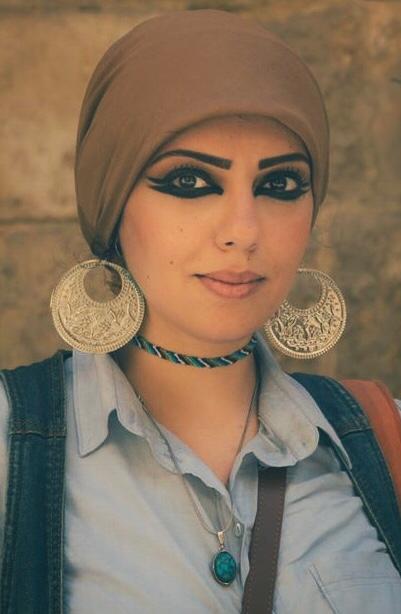She showcases the beauty of her hometown, its timelessness and its daily life through the lens of her beloved camera. Her deep sensitivity and search for beauty reflected in her pictures will surely catch your eye. Interview from the city of a thousand minarets, with the artist who “paints with photos”.
Shaimaa Fekry is an Egyptian artist. Born in Cairo, she took up photography back in 2009 through unexpected circumstances. Her first exhibition was in El Sawy Culture Wheel with a group of photographers, early 2010. She also participated in the Youth Salon Exhibition in Cairo Opera House in 2013.
Shaimaa, how it was to grow up in Cairo?
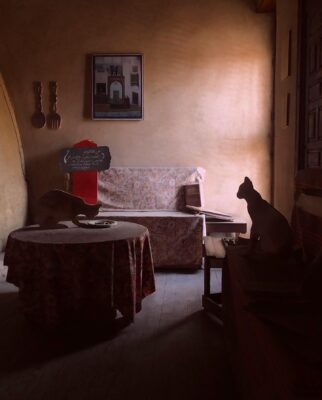 My childhood was very cozy, and mostly spent at my grandmother’s house with my aunts. It was very simple with very warm memories. We ate the traditional Egyptian food, molokhia and mahshi. I think we are an artistic family, we all have our own specialty. My grandfather was an actor and he was also obsessed with photography. There are a lot of pictures from when he was acting.
My childhood was very cozy, and mostly spent at my grandmother’s house with my aunts. It was very simple with very warm memories. We ate the traditional Egyptian food, molokhia and mahshi. I think we are an artistic family, we all have our own specialty. My grandfather was an actor and he was also obsessed with photography. There are a lot of pictures from when he was acting.
Did your grandfather have an influence on you regarding art?
Initially, I wanted to act because I love acting, and I have this talent. My grandfather disagreed, he told my mother it was not good for me or my future. So I did not have this opportunity and studied Media and Mass Communication in the faculty of arts instead. After graduating, I realised that this is not what I wanted to do, it did not feel like me. I wanted to feel free, not be confined to an office.
So when did photography came into picture, so to say?
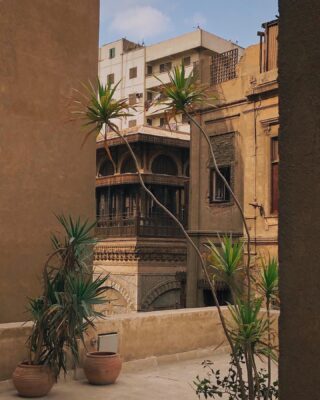 It started when I had a course at AUC (American University of Cairo). I met Simone, an Italian friend of mine, and he took us with my colleague to Old Cairo, in 2008. It was a revelation: I found that a door is open now. He was taking pictures with his dSLR camera because he was a photographer. He was passionate about it. I felt that with these places and with this camera, something would come next. After I finished my course, I bought a new camera and I left it in the drawer for one year without taking any photos. I was afraid, I did not know what to do with it, where to start.
It started when I had a course at AUC (American University of Cairo). I met Simone, an Italian friend of mine, and he took us with my colleague to Old Cairo, in 2008. It was a revelation: I found that a door is open now. He was taking pictures with his dSLR camera because he was a photographer. He was passionate about it. I felt that with these places and with this camera, something would come next. After I finished my course, I bought a new camera and I left it in the drawer for one year without taking any photos. I was afraid, I did not know what to do with it, where to start.
What pushed you to use it one year later?
I saw an ad for a beginner course in photography. I attended it, I met friends and found the courage to take the camera, go on to the streets and take photos, maybe even talk with people on street. It’s not easy to walk with a camera in the streets, it takes courage. Sometimes people get bothered. But I like taking photos of places more than people.
In my point of view, the photo is not the place itself. It’s the place inside you. You see a place the way you feel about it: the light, the darkness, it comes from inside of you. This is the best way to express my feelings and my point of view and philosophy in life through a photo. I’m not searching for admiration, I just want to share the beauty of things, share a feeling. Share myself. Most people think that beauty is in very clean areas and luxury places. But beauty can be found inside our eyes. It’s our vision. If you want to see beauty, you will find it around you in every step you take.
When you’re not feeling so motivated, what do you do?
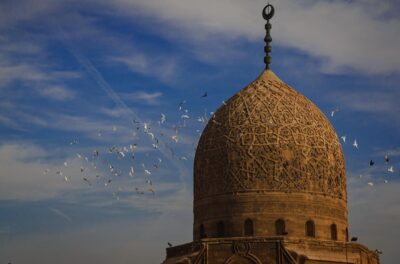 I look at the sky. It’s a very big door for motivation. Just look at the sky and you will find something, it will give you strength. Sometimes it rains and sometimes there’s clouds. Sometimes it’s very clear, sometimes it’s very blue. It’s like our lives.
I look at the sky. It’s a very big door for motivation. Just look at the sky and you will find something, it will give you strength. Sometimes it rains and sometimes there’s clouds. Sometimes it’s very clear, sometimes it’s very blue. It’s like our lives.
Where do you find inspiration?
I love sculpture and old Egyptian history, the Pharaohs. They were true artists. Their art was left for infinity. It’s been 4000 years and we still make art like them! I think Egyptians are born artists, it’s in our genes.
Can you tell us about the exhibition you did with “Cairo Biography Initiative”?
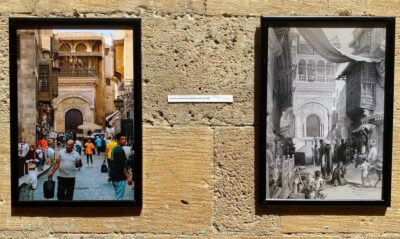
It was a comparison between past and present, where I showed my pictures taken in the same city locations as 19th century painter Robert Hay’s pieces. It was very good idea for people to see the black and white paintings versus the colourful photos. Cairo is like a walking museum where you walk on a thousand years! When I take pictures, I almost feel the soul of the place, people who came here, those who suffered also.
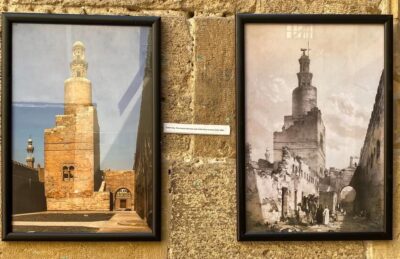
If you had a song to recommend, which one would it be?
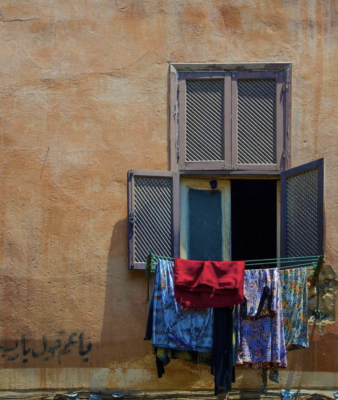 Music is very important in my life. I have it as a background for every thing in my life: when I drive my car, when I cry also, I listen to all types of music but I love piano the most. I also play it. I would recommend Omar Khairat’s Emraah Motalaka (A Divorced Woman), it touches me so deeply. Omar Khayrat is a very famous Egyptian composer, he’s the music of Egypt for me.
Music is very important in my life. I have it as a background for every thing in my life: when I drive my car, when I cry also, I listen to all types of music but I love piano the most. I also play it. I would recommend Omar Khairat’s Emraah Motalaka (A Divorced Woman), it touches me so deeply. Omar Khayrat is a very famous Egyptian composer, he’s the music of Egypt for me.
Do you have a favourite writer, a favourite book?
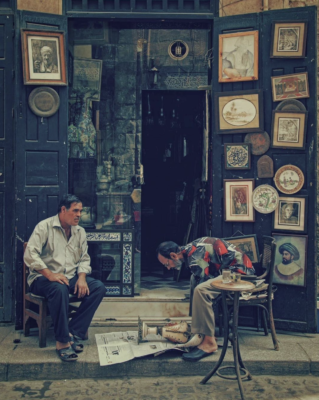 The Egyptian novelist Naguib Mahfouz. I am obsessed with him. He won a Nobel Prize. When I was a child, everyone was talking about him and I did not feel like reading him. But at a specific point I thought I had to give him a try because maybe I didn’t understand him. So I bought all of his books and novels and I read all of them, one after the other! It took me around 2 months, and when I finished I was really impressed. I fell in love with him, as if I could marry him. He was like the man of my dreams. He knows Egypt so much, especially Cairo, he loves Cairo, and he knew how to express every part of the era he was living in. He studied philosophy at university, so it gives his books another dimension. I would recommend reading the following 3 books he wrote:
The Egyptian novelist Naguib Mahfouz. I am obsessed with him. He won a Nobel Prize. When I was a child, everyone was talking about him and I did not feel like reading him. But at a specific point I thought I had to give him a try because maybe I didn’t understand him. So I bought all of his books and novels and I read all of them, one after the other! It took me around 2 months, and when I finished I was really impressed. I fell in love with him, as if I could marry him. He was like the man of my dreams. He knows Egypt so much, especially Cairo, he loves Cairo, and he knew how to express every part of the era he was living in. He studied philosophy at university, so it gives his books another dimension. I would recommend reading the following 3 books he wrote:
بين القصرين 1 (Palace Walk)
قصر الشوق 2 (Palace of Desire)
السكرية 3 (Sugar Street)
What are you currently working on?
I’m working on my solo exhibition. Its name is ق (qaf). It stands for Cairo, the dome and the Quran, which all start with the Arabic letter ق. It will be about my love for Cairo, and will happen probably in the beginning of next year, inshallah.
It will not be an ordinary exhibition but an installation, because I want people to to live and experience, not just see, photos on walls. It will feature nature and crowdeed street sounds from very old parts of Cairo. It’s going to be like a live experience and I invite you to come see it!
This interview has been edited for length and clarity.
FIND OUT MORE Instagram: @shaimaafekry Podcast episode available on Spotify, Anghami, Apple Podcasts. All pictures © Shaimaa Fekry

